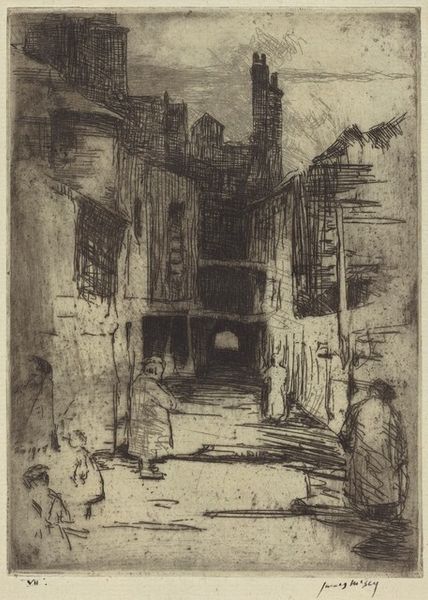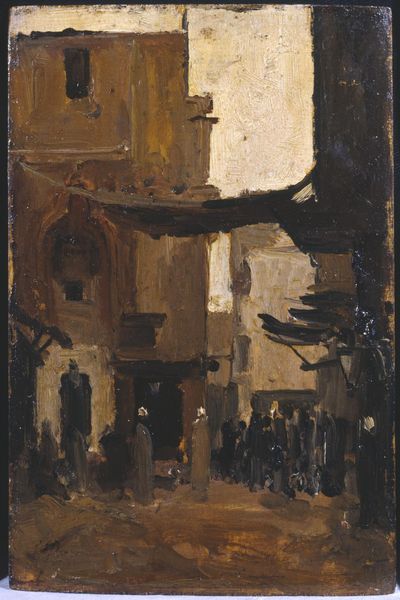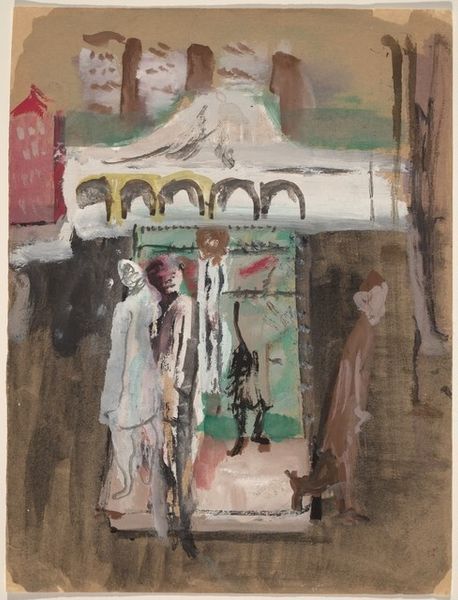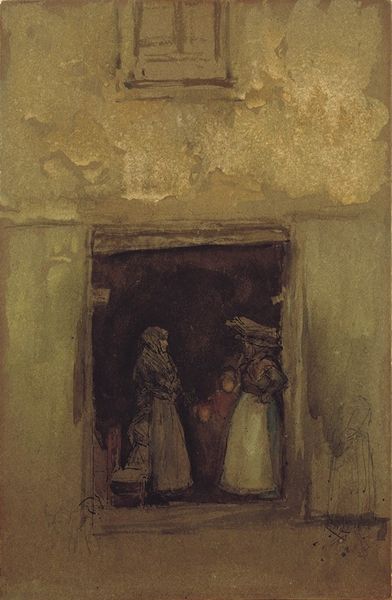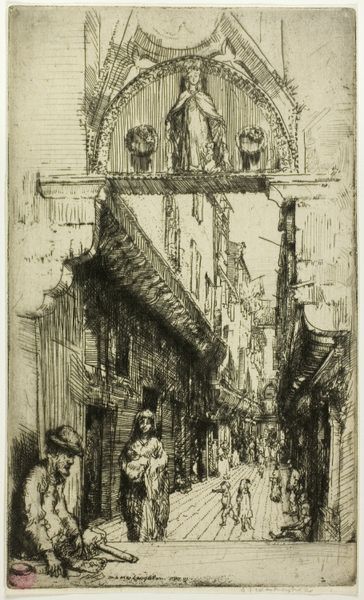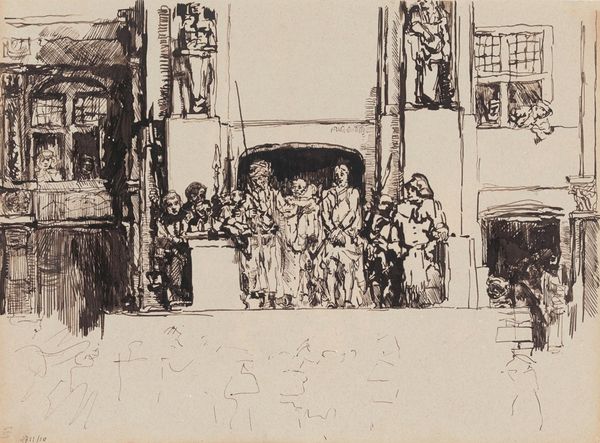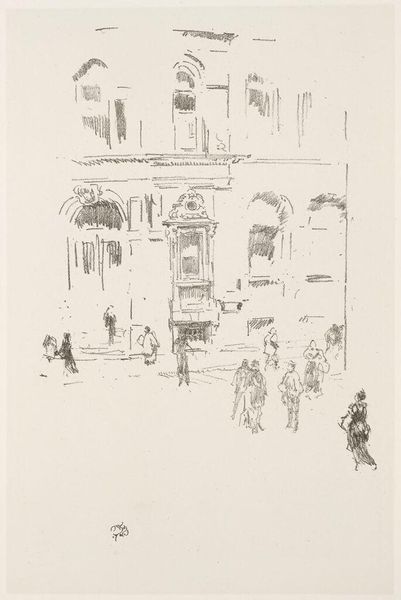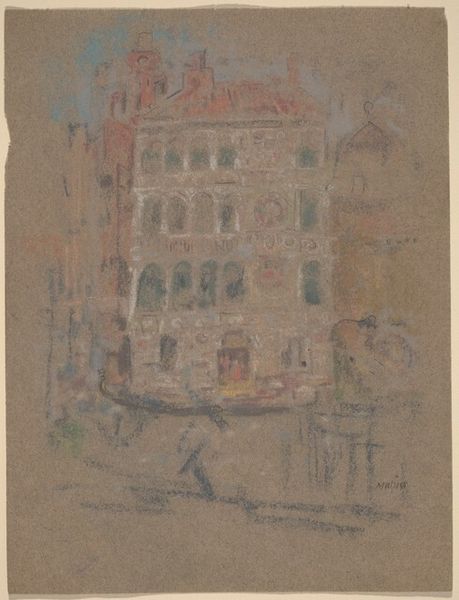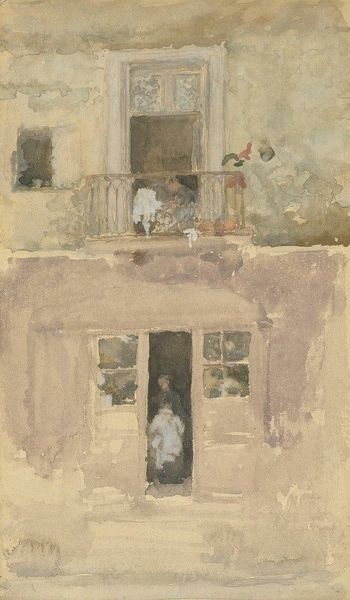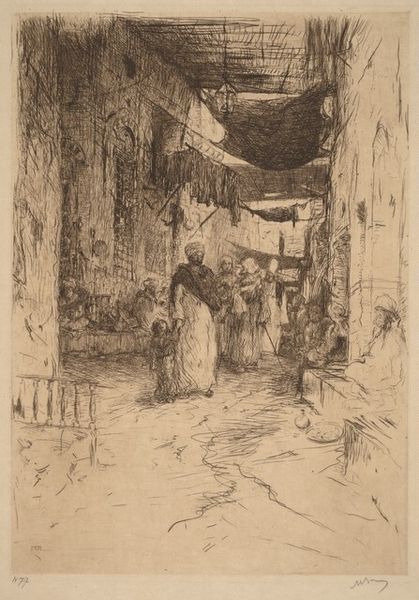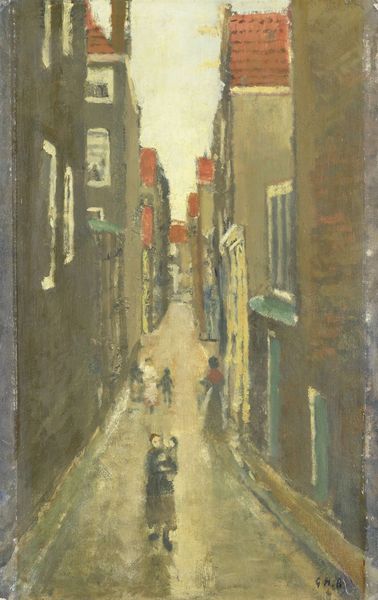
#
water colours
#
incomplete sketchy
#
abstract
#
coloured pencil
#
underpainting
#
painting painterly
#
watercolour bleed
#
watercolour illustration
#
mixed medium
#
mixed media
#
watercolor
Copyright: Public Domain: Artvee
Curator: James McNeill Whistler’s "Bead Stringers," dating back to 1880, offers a glimpse into a bustling Italian alleyway using watercolor and colored pencil. What are your initial thoughts on this mixed media work? Editor: Immediately, I feel a certain…intimacy, despite the crowded scene. The blurred edges, the muted palette… it's like a memory, soft and dreamlike. And that towering vertical format really sucks you into the perspective, doesn't it? Curator: Indeed. The narrow, elongated composition, coupled with Whistler's suggestive, rather than descriptive, application of watercolor bleed and coloured pencil, effectively constructs depth. Notice how the architecture subtly frames the figures, anchoring the spatial recession. The painting achieves what some might describe as an abstracted form of realism, don’t you think? Editor: Abstraction works really well to enhance reality, I think, letting suggestion stand in for direct statement. Look how he places the women low in the foreground; and behind them, almost nothing in terms of realistic features. But you still imagine stories from what’s barely there, from the shapes. Laundry hanging, and a crowd. There’s also something interesting with the colour choices to highlight various sections within a generally brownish background: pastel blues and reddish browns to draw you to where Whistler wants your focus. Curator: Quite right. And Whistler's focus here leans towards atmospheric perspective rather than precise rendering. One sees the visible underpainting throughout, emphasizing the process of creation, and drawing attention to the painting’s status as an object rather than a window onto a specific locale. This piece anticipates the artist's later, more overtly abstract works, wherein the materiality of paint becomes paramount. Editor: Yes! That incompleteness gives it so much character. It's as if Whistler is saying, "Here's a suggestion, a mood; you fill in the rest." And in doing so, the painting comes alive for the viewer; one builds one's own Venice from so few explicit marks. What better form of collaborative authorship? It becomes our memory of place. Curator: A compelling observation. In revisiting "Bead Stringers," I am struck again by Whistler's facility with tone and suggestive form. The painting whispers where others shout. Editor: I am struck at how incomplete and unassuming this piece first appears, but after even a few moments’ attention, one sees the depth of implication behind Whistler's aesthetic choices, and an evocative place springs forth into one's own imagination.
Comments
No comments
Be the first to comment and join the conversation on the ultimate creative platform.

